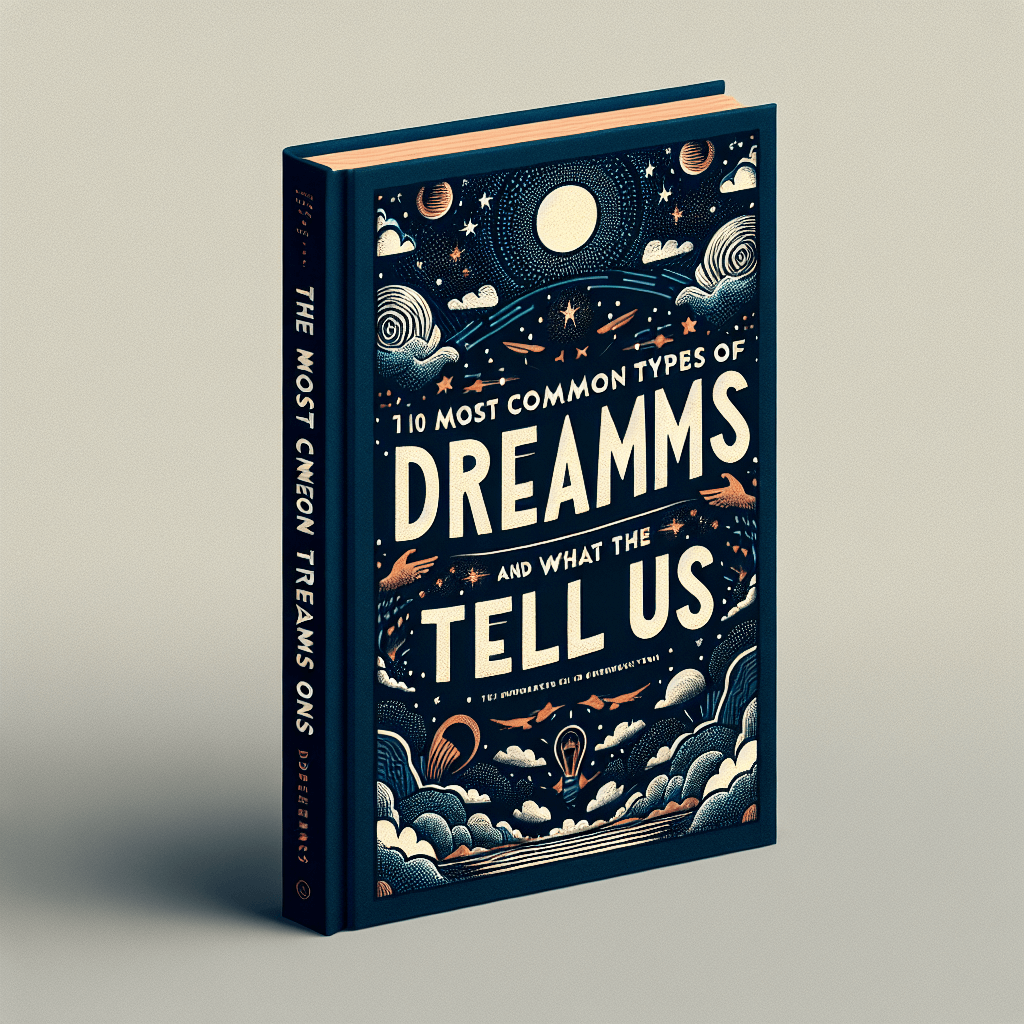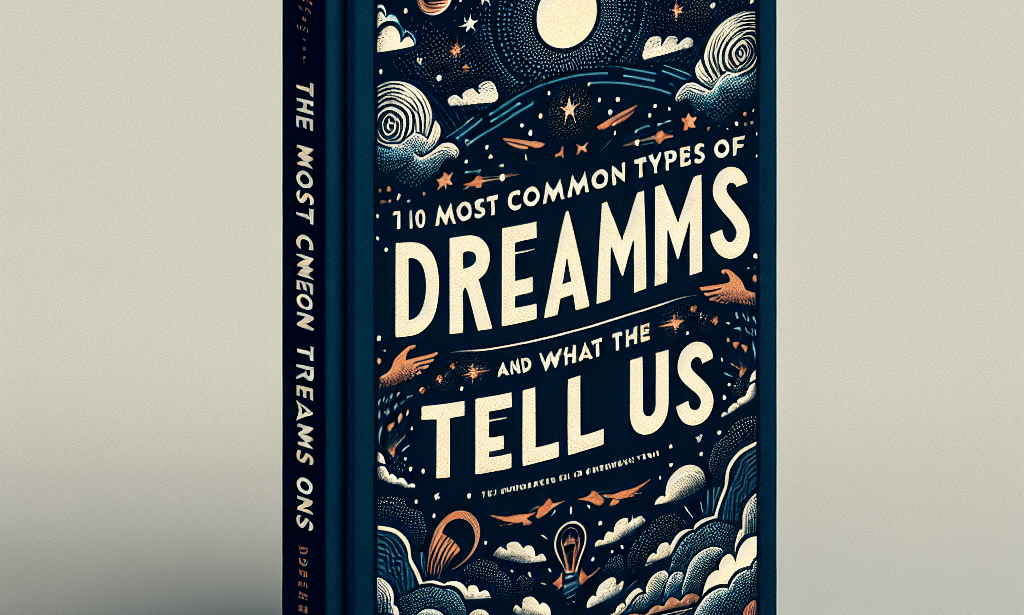
Dreams have been one of the greatest mysteries since the dawn of human civilization. We constantly ask ourselves questions like "Do dreams have messages we need to decipher?" or "What does it mean when teeth fall out in a dream?" (We'll share some theories on this topic shortly).
Sleep is one of the most crucial functions of our body, helping us to relax, recover, and prepare for the challenges of the next day. There are many different explanations for the types of dreams, but we will try to explain them with a few theories. In this article, we will present the 10 most popular types of dreams and how they can help you understand more about yourself and your emotions.
Have an interesting dream to share? Join Questmist to document your dreams, get expert interpretations, and connect with a community of dreamers — Register Now or Login to begin your journey!
Why do we dream?
Some scientists suggest that we should think of dreaming as a process of sorting and archiving all the important information we experienced during the day. Others believe that dreams act as an inner psychotherapist. A good night's sleep relaxes and rejuvenates our tired bodies, while pleasant dreams mitigate our emotional reactions to new experiences.
Additional research suggests that dreaming may help us store memories more effectively, allowing our brains to retain what is necessary and discard the rest. If we think of the brain as a large computer, dreams could be the equivalent of clearing the browser history while keeping important tabs marked for later.
What is a typical dream?
According to some researchers, a typical dream occurs in familiar settings with familiar characters, although the mixing of time and place is common. In 2021, researchers examined the connection between dreaming and key brain areas involved in processing emotions such as anxiety, fear, and threat. One interesting finding is that we simulate frightening situations while dreaming to better respond to them once we wake up. Dreams can be seen as training for our future reactions, preparing us to face real-life dangers.
What are the 10 most popular types of dreams?
- Daydreams - These can be described as fantasy and as transferring our desires and expectations from our imagination. In fact, scientists suggest that about 30% of our waking thoughts are daydreams.
- Epic dreams are considered very vivid and memorable. According to dream interpretation enthusiasts, they are profound with lasting effects on us, while scientists consider it "epic" dreaming with neutral content and no emotionality. Sometimes people dream of tackling very challenging and exhausting tasks, resulting in waking up with a feeling of incredible fatigue the next morning.
- False awakening dreams - You've likely experienced dreaming that you are going through your morning routine – freshening up in the bathroom, making coffee, walking the dog. Upon waking, you realize with surprise that you were dreaming. This is false awakening, which is common when transitioning from REM sleep.
- Lucid dreams - Few people have the ability to dream lucidly. This occurs when a person is between the states of sleep and wakefulness. Some even have the ability to control the storyline of their dream or communicate in this state.
- Nightmares are frightening and disturbing dreams that often cause us to wake up suddenly. They are characterized by emotions like fear, sadness, despair, or disgust.
- Night terrors are episodes of intense stress reaction, sometimes accompanied by screaming and sleepwalking. They are more common in children and usually stop in the teenage years, although some adults also experience them.
- Progressive dreams - Science still struggles to define a theory for them. They are usually described as a series of dreams with a continuous storyline, developing each night or periodically, like reading a book or watching a TV series.
- Prophetic dreams - Since ancient times, people have tried to predict the future based on dreams. From the ancient Egyptians and Greeks through countless religious leaders to Freud and Jung, the idea of predicting events is intertwined with human history. This ability is real for some people who might use it rationally in their daily lives.
- Recurring dreams - Scientists often associate recurring dreams with an unmet need or unresolved problem. Sometimes recurring dreams can be distressing if a person has trouble processing traumatic events while awake.
- Vivid dreams - An unusual state known as REM rebound is often the cause of vivid, intense dreams. It is the brain's response to insomnia or excessive stress. When we sleep, we have increased brain activity, which creates more powerful images. Some people can have vivid dreams when struggling with a high fever.
You don't need to buy or pay for a subscription , Join Questmist to document your dreams, get expert interpretations, and connect with a community of dreamers — Register Now or Login to begin your journey!
There are different ways to classify dreams, but the most common themes are children's dreams of being chased by animals, teenagers' dreams of arriving unprepared at school, and adults' dreams of unexpected loss or failure.
Although there is not much scientific evidence, some dream interpretations have gained popularity:
- Being chased — might reflect your struggle with something in real life where you have to fight or flee.
- Infidelity is likely a reflection of relationship issues, such as lack of communication and trust.
- Car crash — illustrates the feeling of not being in control of a situation or processing a traumatic event.
- Drowning — feeling overwhelmed and suppressing emotions or physical issues with breathing during sleep.
- Death — could indicate a feeling of losing control in a specific situation or losing something valuable.
- Failing exams – anxiety about how well you are handling your responsibilities.
- Falling — these dreams might indicate a lack of confidence in yourself or fear of the unknown.
- Flying — creates a sense of freedom and achieving important goals. It might symbolize the desire to escape from current responsibilities.
- Naked dreams are associated with anxiety and "exposed" vulnerability.
- Pregnancy/birth – emergence of a new idea or development of relationships.
- Falling teeth — we finally got to it! Often associated with feelings of anxiety or inability to communicate.
- Visits from a deceased friend or loved one are sometimes a method of coping with grief from an actual loss or breaking off an unsatisfactory relationship.
The interpretation of dreams is diverse and subjective. Their strange nature is still a mystery to us, but that does not stop them from fascinating and exciting us. Whether you have had all types of dreams or just some of them, it is amazing to learn that scientists are still trying to crack the code of what dreams mean and how they affect our waking life.

You must be logged in to post a comment. Please Login or Register .